March 4, 2020
Italy is lavished with citrus, more so in Southern Italy than Northern Italy. Even in Tuscany, though, families traditionally use a limonaia to winter-over lemon trees grown in pots.
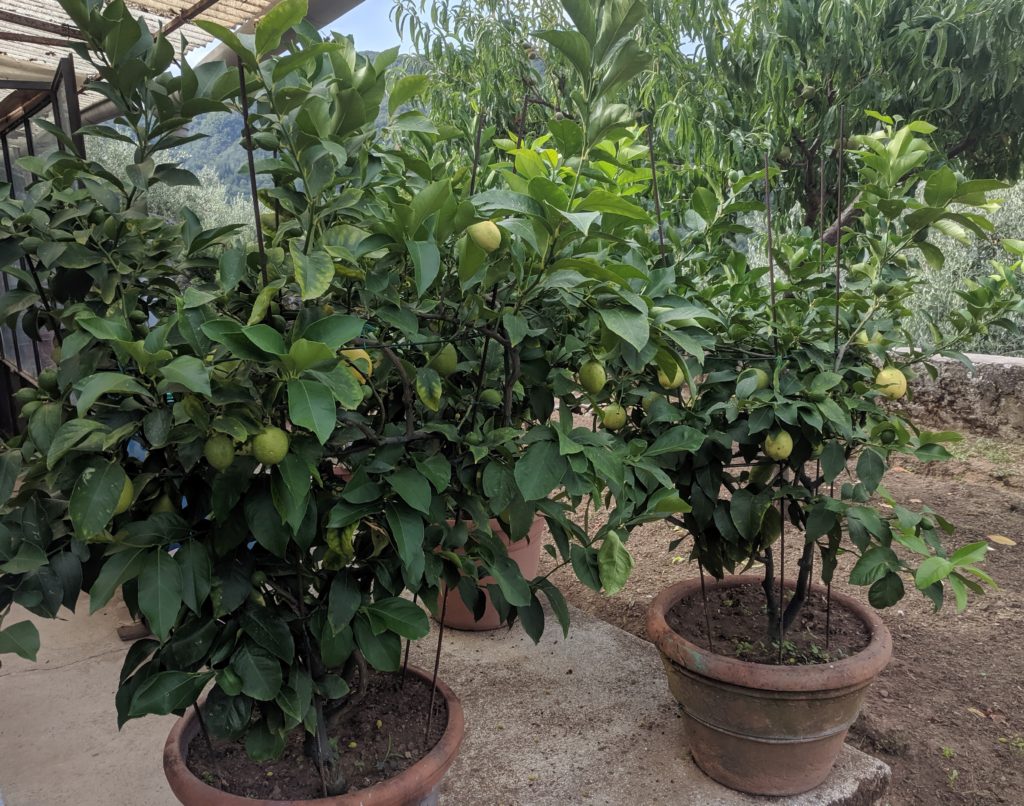
Citrus fruits feature prominently in Italian cuisine, especially in Southern Italy. Calabria is responsible for about 25% of the citrus fruit produced in Italy.
Join our mailing list and you’ll never miss a recipe again!
A very short list of Italian foods that contain, or are made from citrus includes the famous limoncello liqueur and its orange-based cousin, arancello; panettone that is traditionally made with candied citron; lemon sorbetto (sorbet); an array of marmalades and jams; candied citrus peels of various types eaten as sweetmeats, sometimes coated in chocolate, as well as diced and incorporated into cakes; citrus salads, including an amazing Sicilian salad of oranges, fennel, onions and black olives; and the endless dishes where lemon juice is the basis of a pan sauce or salad dressing or, in lesser quantities, perks up other flavors without making itself known.
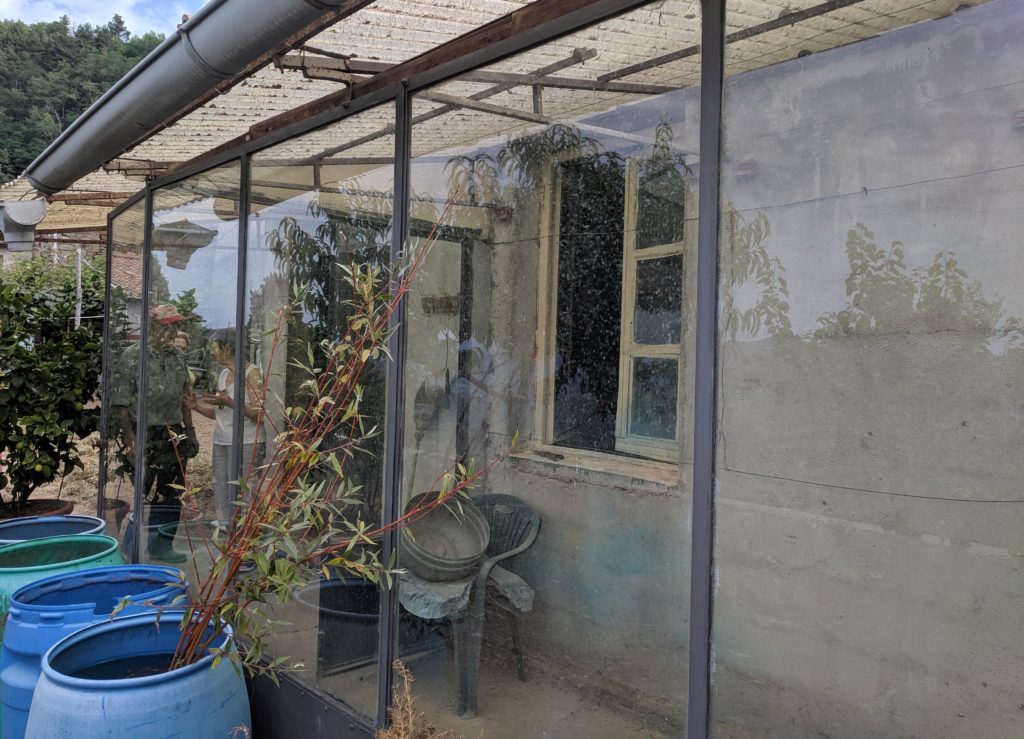
Bergamot, most of which (and certainly the highest quality) comes from Calabria, is the defining flavor of Earl Grey Tea. It is also used in an array of cosmetics and fragrances.
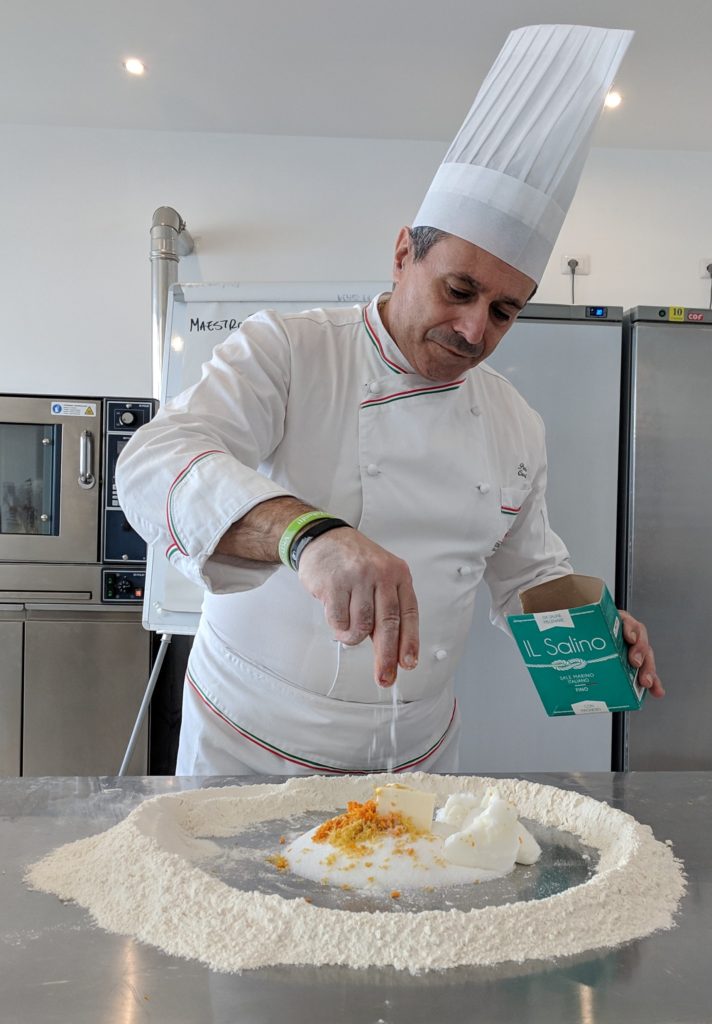
Bergamot is also one of several citrus fruits used by Maestro Paolo Caridi to concoct the scrumptious citrus flavoring he uses in some of his pastries. I’m itching to find a source of bergamot, which I understand grows in Palm Springs, California, to make a batch, having gotten his formula when I studied at the Italian Culinary Institute.
Follow us on your social media platform of choice
Being surrounded with citrus at our home in Palm Springs, I try to find ways to use the bounty. It took me a while to come up with an orange cake (torta alle arance) that was everything I though an orange cake should be: a moist, not to sweet cake with a sturdy crumb and a distinct orange flavor.
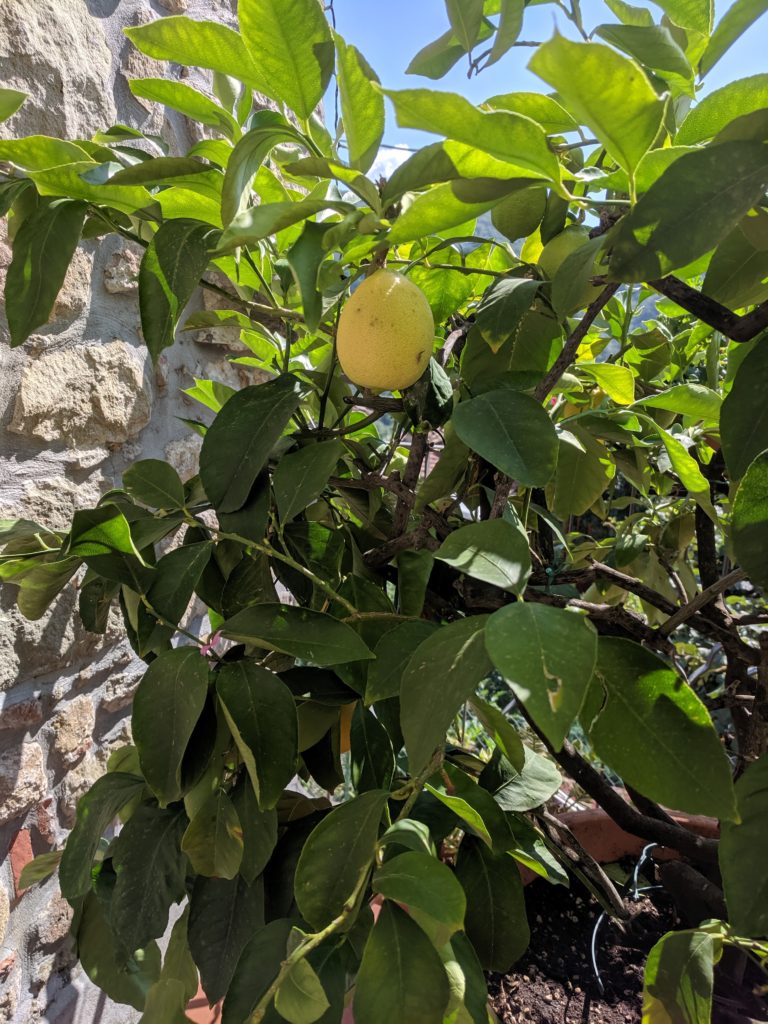
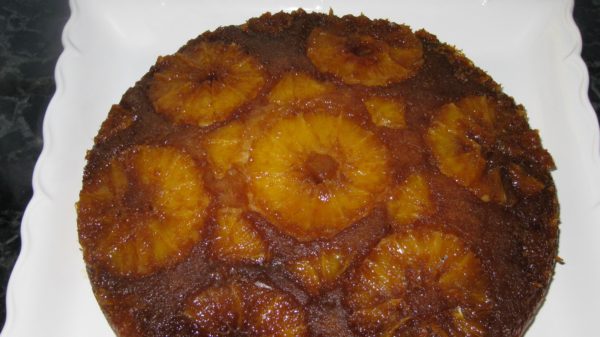
| Prep Time | 45 minutes |
| Cook Time | 1 hour |
| Passive Time | 1 hour |
| Servings |
people
|
- 160 grams dark brown sugar (¾ cup, packed)
- 115 grams unsalted butter (4 tablespoons)
- 1 tablespoon white sugar
- 2 tablespoons fresh orange juice (reserve the zest for the batter, see below)
- 3 medium oranges
- butter for greasing the cake pan
- 185 grams all purpose flour (1 2/3 cups)
- 50 grams cornmeal (6 tablespoons)
- 1 1/2 teaspoons baking powder
- 1 pinch salt
- 185 grams unsalted butter room temperature (13 tablespoons)
- 250 grams sugar (1 1/4 cups)
- 4 large eggs room temperature
- 200 ml sour cream (3/4 cup plus 1 tablespoon)
- 2 1/2 teaspoons vanilla extract
- Grated zest of one orange
Ingredients
Topping
Cake and Assembly
|

|
- Grease a 10-inch x 2-inch circular cake pan with butter.
- Finely grate the zest of the three oranges without any of the white pith. A microplane grater work well. Reserve the zest and oranges separately.
- Combine brown sugar, butter, white sugar, and orange juice in a small pan. Heat, stirring frequently till butter is melted and sugar is dissolved. Raise heat and boil for 2 minutes, without stirring, until slightly thickened.
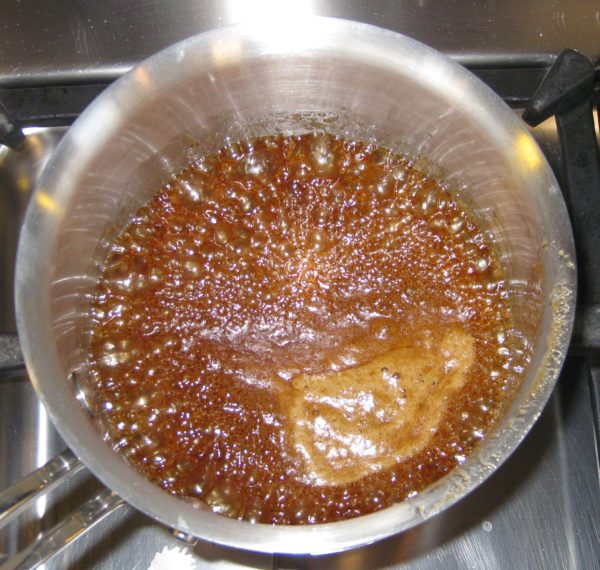
- Remove caramel syrup from the heat. Stir in the zest of three oranges. Pour the caramel on the bottom of the prepared pan. Allow to set for approximately 5 minutes, until cool.
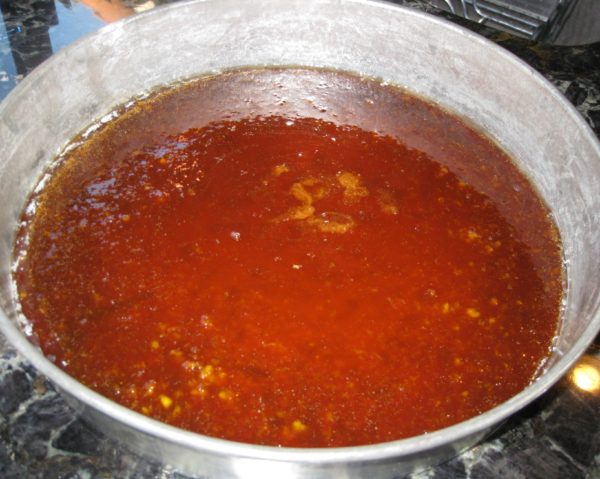
- Meanwhile, slice the oranges approximately ¼ inch thick. Cut off all pith and rind. Remove the tough core from any slices that have it. Scissors work well for doing this.
- After the caramel has cooled for about 5 minutes, arrange orange slices over the caramel without overlapping. Cut slices as needed to fill in the larger gaps between the full slices.
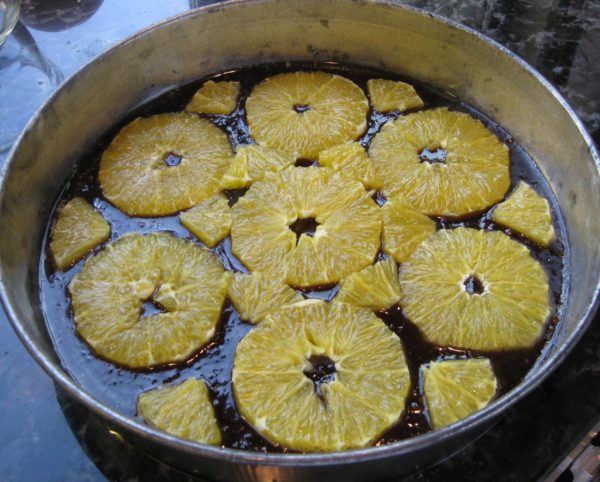
- Stir together the flour, cornmeal, baking powder and salt. Reserve.
- Beat the butter in an electric mixer until lightly creamed.
- Add the white sugar, then beat at high speed until light and fluffy, approximately 4 minutes.
- Add eggs, one at a time, beating on medium after each addition until the egg is combined.
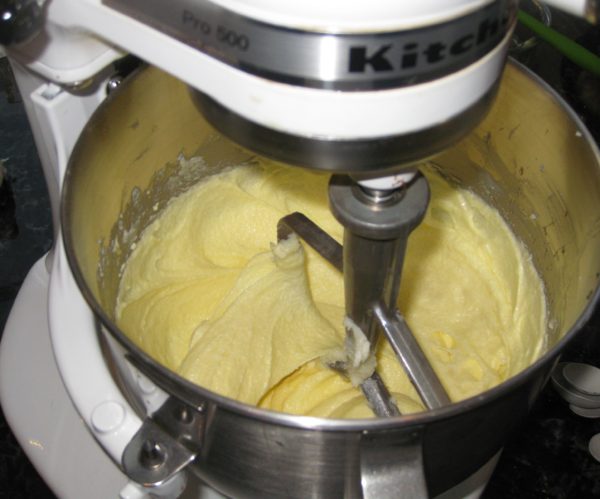
- Mix in sour cream then vanilla and orange zest.
- With the mixer on low, add the flour mixture a little at a time and mix until almost combined. Finish mixing by hand.
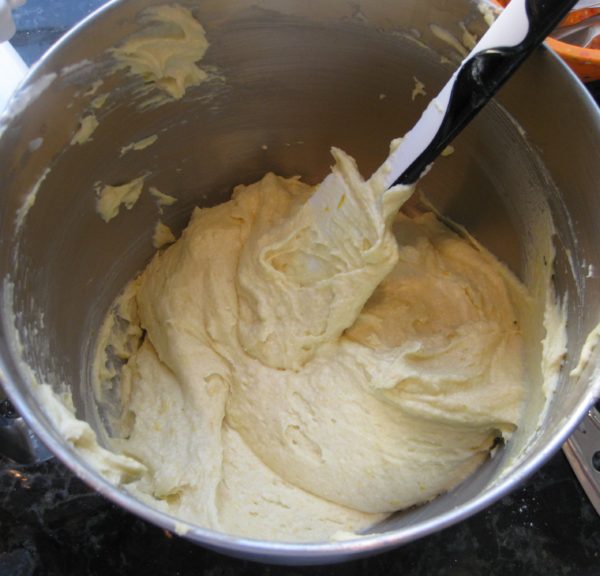
- Spoon the batter over the orange slices in the prepared pa. Spread the batter and tap the pan to remove air bubbles.
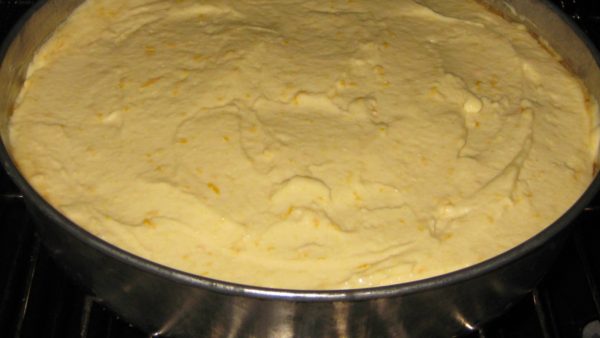
- Bake at 350°F until a cake tester comes out clean, 50-55 minutes. Cool for 10 minutes in the pan.
- Using a knife, loosen the cake from the sides of the pan. Invert onto a serving dish. Cool completely.
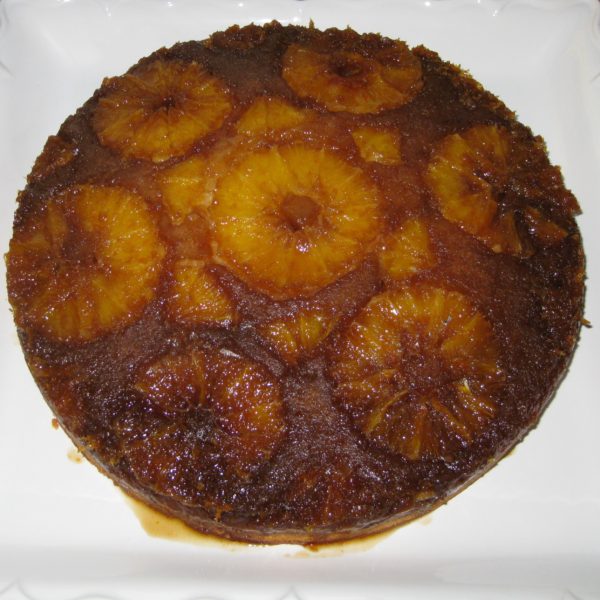
Copyright © 2020 by Villa Sentieri, LLC. All rights reserved.

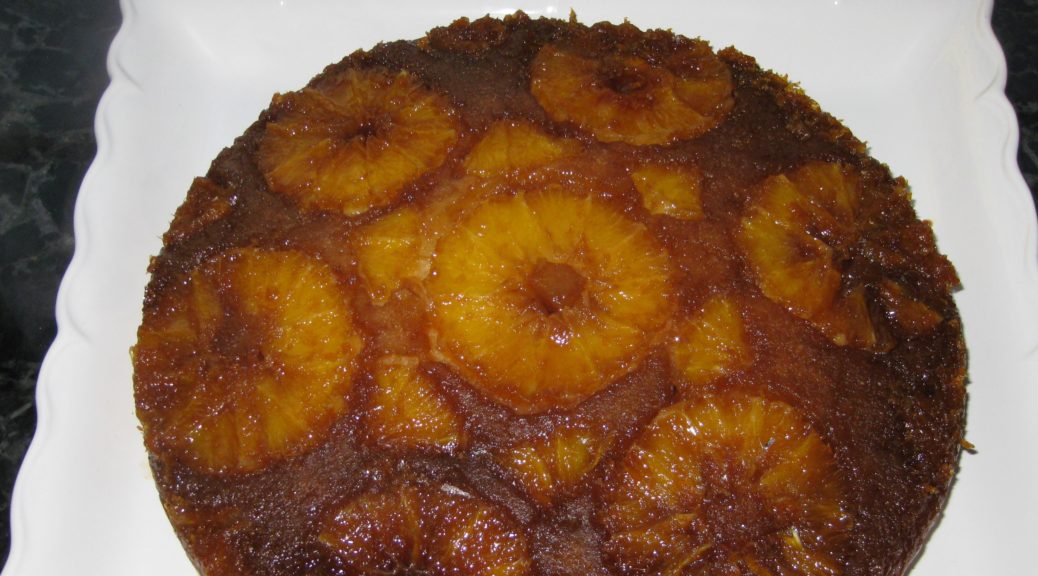
This looks absolutely scrumptiously delicious. I am going to try it when I get back from San Francisco. Thanks
I hope you enjoy it. If possible, I suggest using the metric measurements for best accuracy.
OK. This just moved to the top of my list of new recipes to try. Not only is it prettier than a similar one I make with lemons but from the ingredients, I am sure it will be more moist and juicy. Plan to try it this weekend.
Loved the Mob Museum photos. It was such a fun day for me. Miss seeing you more often.
I’ll try to make it to Nevada more often. Meanwhile, enjoy the cake. If you have a scale, I suggest using the metric measurements for the best results.
Yummmmmmmmmmmmmmmmmmmm!
You’re welcome!
Hi Gary.
The cake was wonderful. The taste is intense and everyone loved it. It came out of the pan easily (I was afraid it would stick and come out in pieces). However it was not as pretty as yours—–it came out high and lovely and then the middle sank–didn’t effect taste in any way–just not as pretty. Any idea why the middle sank?
My first guess is that the cake was not cooked enough for the middle to be structurally sound, and thus it collapsed. We’ll just have to try it together to figure it out.
I was a very lucky “taster” of the cake Melinda Orlando made. It was one of the best citrus cakes I have ever tried (and I just love cake!) The middle did sink in a little, but it did not change the flavor.
I’m so glad you enjoyed it. When I’m there next we’ll make it together and see if we can figure out why it sunk a little. I’ve mande it many times and haven’t had that happen. I’ve had other disasters, like having the caramel leak out when I used a springform pan, thinking I needed to do that to get the cake out. Luckily I discovered it comes out of a regular cake pan just fine. We’ll definitely figure out what happened.